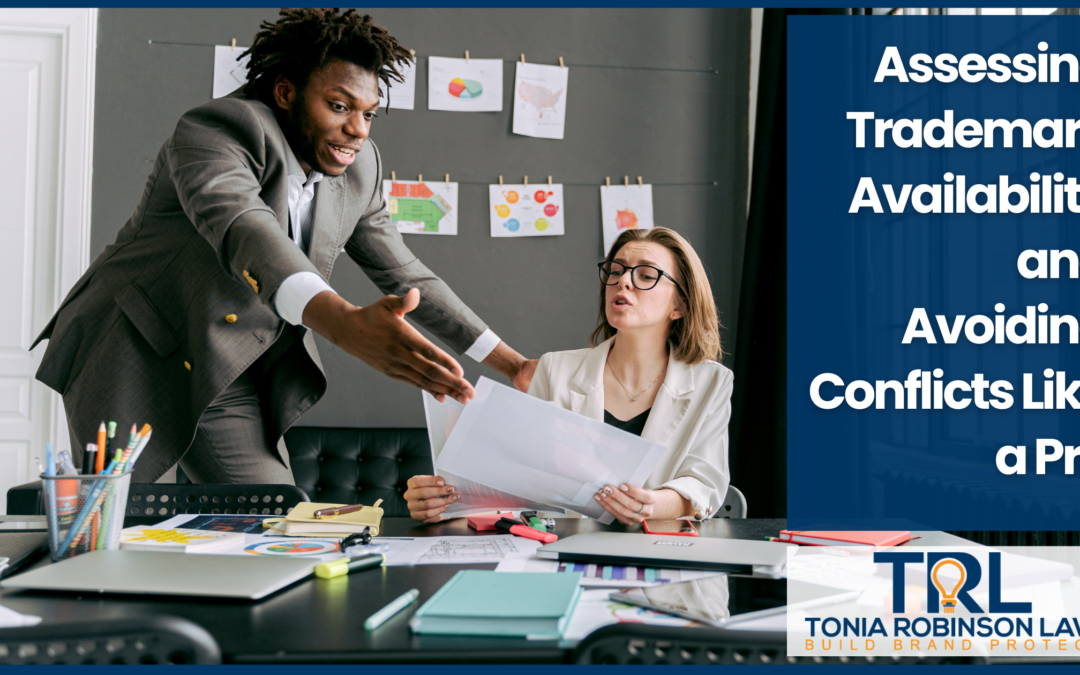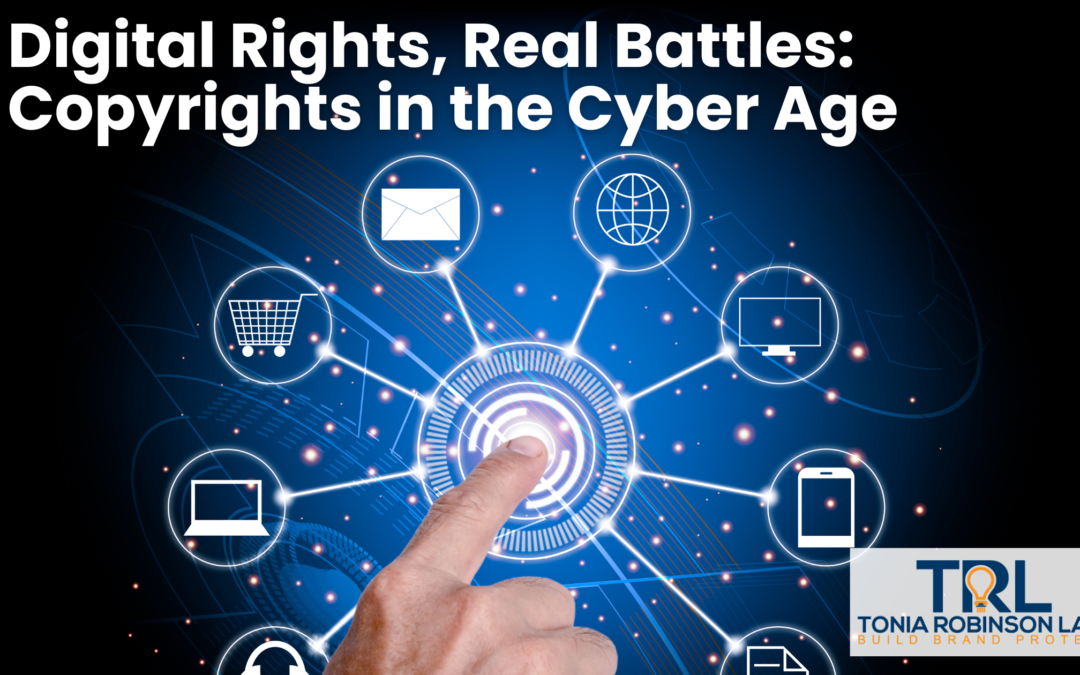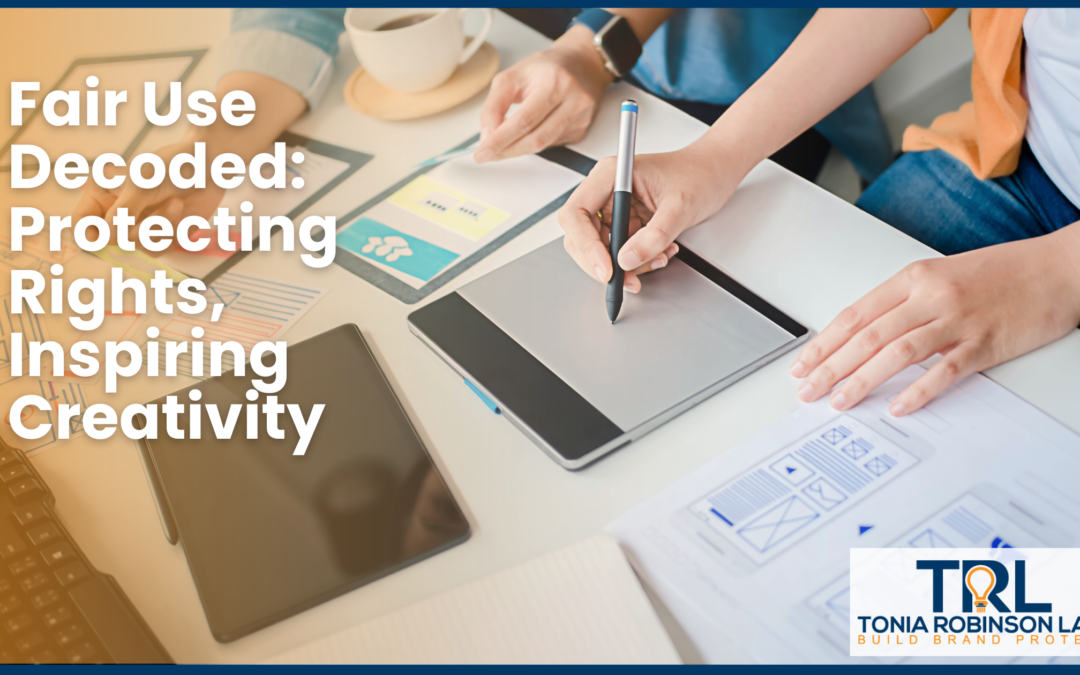
Aug 14, 2024 | Uncategorized
Ever find yourself humming a tune only to realize you’re not only remembering it—you’re broadcasting it live on your social media? Or maybe while drafting that business proposal, a “copy-paste” from a webpage seemed harmless enough? Welcome to the all-too-common world of copyright infringement, where good intentions often pave the road to legal headaches.
It’s simple: copyright infringement occurs when someone uses a copyrighted work without permission from the copyright holder. This might sound like just another stern warning to stay on the straight and narrow, but understanding this can save you from a world of trouble.
Direct Infringement
This is the “caught red-handed” scenario. If you copy someone’s song, article, or that mesmerizing photo and pass it off as your own, you’re directly infringing. Yes, even if it’s just sharing that latest blockbuster movie with your 500 closest internet friends.
Contributory and Vicarious Infringement
Enjoy lending a helping hand? That’s commendable—unless you’re aiding copyright infringement. Contributory infringement happens when you provide the means (like a website or software) that others use to infringe. Vicarious infringement? That’s when you benefit from the infringement you could have controlled but chose not to. Turning a blind eye can cost you.
Inducement of Infringement
This one’s for the “encouragers.” If you’re out there telling people to go ahead and use copyrighted content illegally, you’re not just a bad friend—you’re also legally culpable.
What Can Copyright Holders Do About It?
Legal Letters and Court Actions
A cease and desist letter is often the first “friendly” reminder that someone’s stepping on your creative toes. If that doesn’t work, copyright holders can drag the infringers to court, demanding everything from a halt to their actions (injunctive relief) to a nice chunk of their ill-gotten gains (actual damages).
Pay Up
Statutory damages are the court’s way of saying, “You did wrong, now pay up,” without making the copyright holder prove every penny lost. And yes, in more severe cases, this can turn into a criminal drama faster than you can say “infringement.”
Keeping It Clean & Avoiding Infringement
Education and Awareness
Make sure your team knows what’s off-limits. Ignorance is not bliss—it’s a potential lawsuit. It’s essential that everyone in your team understands the boundaries of copyright law. This isn’t just about avoiding the copying of entire works. It extends to using music clips for a background in a video, quoting extensive passages without permission, or using photos found online without verifying the license. Training sessions and regular updates on copyright policies can ensure that your team treats copyright with the respect it deserves, reducing the risk of legal surprises.
Mark Your Territory
Utilizing copyright notices on your creative outputs isn’t an optional flourish—it’s an important step in declaring ownership. Whether it’s a digital watermark, an embedded copyright symbol (©), or a clear statement on published material, these notices act as the first line of defense against infringement by informing would-be users of your rights.
Legal Agreements
Licenses and contracts should spell out how your content can be used, under what conditions, and the penalties for violation. These documents are enforceable tools that clarify the dos and don’ts of using your intellectual property. This is especially important when collaborating with external parties or licensing your work to others.
Wrapping It Up
So, why care about copyright infringement? Because creativity is for everyone. As long as we respect other creators, we can foster a fair playground for everyone while avoiding legal action.
Need a hand managing the ins and outs of copyright law? Tonia Robinson Law is just a call away at (415) 450-7663. Don’t let infringement disrupt your peace of mind or creativity—get the right advice and keep your work safe.

Jul 17, 2024 | Uncategorized
Launching a new product or business is exciting, and choosing the perfect name is a big part of that process. Ensuring your trademark’s availability is crucial to avoid legal issues and protect your brand.
Imagine you’re about to launch your brand-new product or business, and you’ve got the perfect name picked out. But before you unleash your brainchild on the world, there’s a crucial step you need to take: ensuring your trademark is truly yours to use.
Why Bother with a Trademark Search?
To dodge the legal drama, of course. Think of a trademark search as your personal legal shield, protecting you from the arrows of potential lawsuits. It’s your first line of defense against stepping on any legal toes.
Ensuring your trademark is unique not only sets you apart from the crowd but also builds a loyal customer base that recognizes and trusts your brand alone. Doing this process first is a real time saver. Finding out early that your dream trademark is taken can save you from the heartbreak (and bank-break) of rebranding later on.
How to Conduct a Rockstar Trademark Search
Kick things off with a simple preliminary search. Use online tools like the United States Patent and Trademark Office’s (USPTO) database to look for direct matches. It’s like checking if someone else has already RSVP’d to the party with your outfit!
Next, broaden your search to include similar-sounding names, alternate spellings, and visual twins. This step is about making sure there are no hidden gems you’ve missed. It’s ok to bring all your works in progress along with you on the search. It can help eliminate overused business names to help you stand out.
Tips to Keep Your Trademark Conflict-Free
Once you’ve gathered your intel, it’s time to consult with a trademark attorney. They’ll help you sift through the noise and give you the lowdown on whether your chosen mark is really as cool and conflict-free as you think. Engaging a professional might cost a bit upfront, but think of it as investing in peace of mind. They’re the seasoned pros who know where to look and what to look for.
Make your mark stand out by adding unique logos or design elements. It’s like accessorizing—done right, it can turn heads and ward off copycats. Understand where your trademark competitors are playing. If your mark is common in another state or country, knowing this can help you steer clear of potential clashes.
Keep Your Eyes Peeled
Stay vigilant by monitoring new trademarks that might encroach on your turf. Think of it as keeping your garden free of weeds. It may seem tedious, but it will be worth it to protect your brand.If you’re ready to secure your trademark and need legal advice, contact Tonia Robinson Law at (415) 450-7663 to schedule a consultation. Protect your brand and ensure you get the peace of mind you deserve.

Jun 18, 2024 | Uncategorized
In today’s digital whirlwind, the quest to protect copyright is akin to navigating a bustling cityscape—dynamic, complex, and always on the move. For creators and corporations alike, the internet’s vast expanse is both a playground of endless possibilities and a battleground where the rules of engagement are continually evolving. For copyright holders, from solo creators to expansive corporations, these changes make it essential to have a nuanced approach to copyright management, combining an understanding of both technological advancements and the legal principles that protect intellectual property.
Tackling the Hydra of Online Piracy
Imagine online piracy as a multi-headed hydra, lurking in the depths of the digital sea. Each head represents a different challenge: unauthorized streaming services, peer-to-peer (P2P) networks, and websites filled to the brim with pirated content. Cutting one head off seems to only sprout another, as the ease of copying and sharing digital content spawns new piracy platforms overnight. Combatting this beast requires a hero’s arsenal—legal strategies, savvy use of digital rights management (DRM) technologies, and a shield of public awareness to protect the realm of creative content.
Social Media Maze
Social media platforms are like bustling marketplaces, where photos, videos, music, and text are exchanged with the casual ease of passing notes in class. But here’s the twist: not all notes are meant to be shared. When copyrighted material gets passed around without permission, the marketplace becomes a maze of copyright disputes. While platforms try to play referee with automated systems like Content ID, we often find ourselves on the receiving end of controversies regarding fair use, erroneous copyright claims, and unwarranted content removal. Managing copyright protection on social media necessitates familiarity with each platform’s policies.
Cloud Computing: The Final Frontier
The cloud—it’s not just a fluffy cumulus floating in the sky but the final frontier of copyright protection. Cloud computing has revolutionized data storage and access, presenting novel challenges for copyright enforcement. As content drifts into this nebulous space, enforcing copyright laws becomes pretty complex. To safeguard copyright in such environments, it’s crucial for cloud service providers to adhere to copyright laws, establish clear usage terms through contractual agreements, and implement technological measures to monitor and control content distribution.
Your Partners in the Digital Odyssey
Combating the challenges of copyright protection in the digital era demands a multifaceted approach. Updates to copyright laws will continue to evolve, but not at the same rate as the technology that impacts it. Advancements in technology for detecting and mitigating copyright infringement play a huge role, as does the education of creators and consumers about the significance of respecting intellectual property rights. Together, these strategies aim to create a digital ecosystem where copyrighted material is protected and valued, making it easier for creators to express themselves safely.
As we chart the course together through the ever-changing digital landscape, remember that Tonia Robinson Law is more than just a law firm—we’re your crew, your co-navigators, and your champions in the quest to protect what’s rightfully yours. Ready to start the adventure? Reach out and schedule a consultation with us today. Let’s make the digital world not just a place to explore but a domain where your creativity is respected and protected.

Feb 15, 2024 | Uncategorized
Hello, fellow creatives and innovative thinkers! Today, we want to delve into a topic that’s as vital to your brand as a masterstroke is to a canvas – trademarks. These unique symbols, distinctive logos, and creative taglines are the essence of what makes your brand one-of-a-kind.
In the ever-competitive business world, trademarks are your brand’s personal stamp, distinguishing your creative vision and setting your work apart. So, let’s explore how trademarks can be the key to carving out your unique niche in the marketplace.
Trademarks: Your Brand’s Unique Identifier
Think of your trademark as the signature on your masterpiece. It’s the identifier that customers recognize and associate with the quality and originality of your work. Whether it’s a visually striking logo or a cleverly crafted brand name, your trademark is a reflection of your brand’s personality and values.
Standing Out in a Busy Marketplace
In a marketplace brimming with competition, your trademark helps your brand shine. It’s the marker that makes customers pause and take notice, differentiating your offerings from the rest. A distinctive trademark can be a deciding factor for consumers, conveying your commitment to creativity and quality.
The Strategic Value of Trademarks
Trademarks offer more than just an artistic touch; they provide essential legal protection. This protection ensures your unique ideas and brand identity are shielded from imitation and misuse. It’s about securing the integrity of your work and the trust you’ve built with your audience. Essentially, your trademark is a declaration that your brand’s creative flair is exclusively yours.
Legally, owning a trademark grants you exclusive rights to use your specific symbols or names in connection with your products or services. This exclusivity is a potent tool in maintaining your brand’s uniqueness. Strategically, trademarks are assets that can grow in value alongside your brand’s reputation. They can be licensed, sold, or used as a foundation for expanding your brand’s reach.
Building Brand Equity with Trademarks
Trademarks play a vital role in developing brand equity. They create a lasting impression, fostering recognition and loyalty among your customer base. Over time, a well-managed trademark becomes synonymous with the qualities your brand stands for, significantly enhancing your brand’s overall value.
In the creative and business world, trademarks are crucial in establishing and protecting a strong, unique brand identity. They are pivotal in differentiating your business in a competitive environment and safeguarding your reputation. For creative businesses looking to make a lasting impact, investing in a distinctive trademark is a step towards ensuring your vision and hard work are recognized and respected.
At Tonia Robinson Law, we understand the importance of your creative and business endeavors. If you’re looking to secure your brand’s identity with a trademark, we’re here to help. Schedule a consultation with us by calling (415) 450-7663, and let’s work together to protect and enhance your brand’s unique voice in the marketplace.

Jan 15, 2024 | Uncategorized
Copyright is a fundamental legal tool that protects the works of authors, artists, musicians, and all kinds of original compositions. It grants exclusive rights to these creators over their works. However, the principle of fair use is an often necessary counterbalance, ensuring the free flow of ideas and information, which is important for fostering innovation and knowledge sharing.
Just think of all the potentially forgotten stories just waiting to be retold! With this great power, comes great responsibility, though, which means it’s important to understand how these laws work to remain respectful to the original creators.
Exploring Fair Use
Fair use is a legal concept that allows limited use of copyrighted material without needing permission for specific purposes like criticism, teaching, or research. It plays a significant role in enabling creative freedom and encouraging intellectual engagement. The United States Copyright Act’s Section 107 outlines fair use as an allowable exception.
Courts look at four factors to assess fair use:
Purpose and Character of Use: Imagine you’re at a talent show. One contestant takes a classic song and turns it into a hilarious parody, giving it a whole new twist. That’s what courts love – a transformative use that adds new flavor or meaning to the original. Just hitting ‘copy-paste’ on a work, however, is like a singer performing a hit song note-for-note. Sure, it’s good, but it lacks originality.
Nature of the Copyrighted Work: Here, the courts weigh if a work is more like a riveting novel or a straightforward news report. Creative works are like the divas of the copyright world – they get more protection. So, taking a snippet from a news article for your blog is usually cool, but using chunks of a blockbuster movie? That’s likely a no-go.
Amount and Substance Used: This is where less really is more. It’s like cooking; a dash of salt can perfect a dish but pour in the whole packet, and you’ve ruined it. Using a small, carefully chosen snippet of a work can be fair play, like a movie reviewer showing a 10-second clip. But screen the whole film? That’s overdoing it, and the courts probably won’t applaud that.
Effect on Market Value: This is all about the money. If your use of someone’s work starts taking dollars out of their pocket, it’s likely not fair use. It’s like if you started selling cheap knockoffs of a designer dress right outside their boutique. If what you’re doing could hurt the original’s sales, the courts might just give you the gong.
Practical Advice for Using Copyrighted Material
Fair use can be a subtle area, but here are some basic guidelines:
- Use only what is necessary for your purpose.
- Keep your use distinct from the original and cite sources when needed.
- Always credit the original creator.
- Avoid using copyrighted material for commercial purposes.
- Seek legal advice if unsure about your use’s compliance with fair use.
Getting Creative
In essence, fair use stands as a beacon of balance in the world of copyrights, offering a bridge between the protection of original works and the flourishing of new creative expressions. It’s a delicate dance of respecting the past while embracing the future, ensuring that the legacy of creators is honored even as new stories are told. Whether you’re an artist, educator, or innovator, understanding and applying the principles of fair use is crucial in your creative journey.
For guidance on fair use or other copyright matters, Tonia Robinson Law is ready to assist. We offer clear, practical advice to ensure your creative activities and respect for intellectual property rights go hand in hand. Schedule a consultation with us to utilize your inspirations with confidence.

Dec 8, 2023 | Uncategorized
For artists and entrepreneurs with a groundbreaking app idea, the journey from concept to pitch is full of excitement and potential pitfalls. One important aspect that’s often overlooked in the eagerness to show off an amazing new app is the protection of the idea itself. Before presenting your app to potential partners or investors, it’s vital to safeguard your intellectual property. This ensures that your unique concept remains yours and prevents others from capitalizing on your innovation.
Understanding Copyright and Trademark Protection for Apps
Copyright Protection
Copyright protection is key for app developers, as it covers original works of authorship. For an app, this includes the source code, the user interface (UI) and user experience (UX) design, and any related documentation like design documents and user manuals. To secure copyright protection, you should register your app with the U.S. Copyright Office. This registration not only solidifies your legal rights but also facilitates the enforcement of these rights in case of infringement.
Trademark Protection
Trademarks protect words, phrases, symbols, or designs that identify and distinguish the source of goods or services. For an app, this can include the app name and logo, any unique catchphrases or slogans, and custom icons or graphics. Registering your app’s trademark with the U.S. Patent and Trademark Office (USPTO) grants you exclusive rights to the mark and the ability to take legal action against unauthorized use.
Implementing Additional Protective Measures
Beyond copyright and trademark protection, there are further steps you can take to protect your app idea:
Non-disclosure Agreements (NDAs): Before engaging in discussions with potential partners, investors, or collaborators, have them sign NDAs. This legal document ensures that any confidential information about your app remains protected.
Regular Documentation: Keep detailed records of your app’s development, including design sketches, code versions, and brainstorming notes. This documentation can be crucial in establishing the timeline of your app’s development.
Secure Communication: When discussing your app, especially the confidential details, use secure communication channels to prevent unauthorized access to sensitive information.
Taking these steps significantly lowers the risk of your app idea being appropriated by others. It also positions you to fully benefit from your innovation and hard work.
Your Sword & Shield
Navigating the legal minefield of protecting an app idea is as important as the development of the app itself. Employing a combination of copyright and trademark protections, along with additional safeguards like NDAs and provisional patents, is crucial in securing your intellectual property. These measures not only protect your app idea but also ensure that you maintain the rights to the rewards of your creativity and hard work.If you are preparing to pitch an app idea and want to ensure that your intellectual property is fully protected, Tonia Robinson Law is here to help. Our team is dedicated to guiding artists and entrepreneurs through the complex landscape of intellectual property law. Schedule a consultation with us today by calling (415) 450-7663, and let us help you secure the legal protection your app idea deserves.







Recent Comments